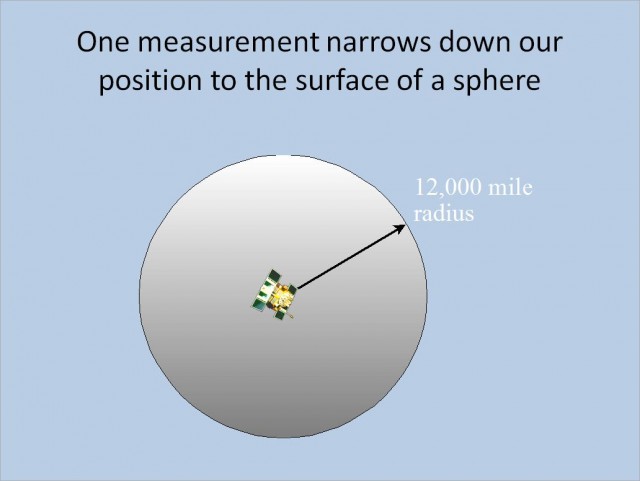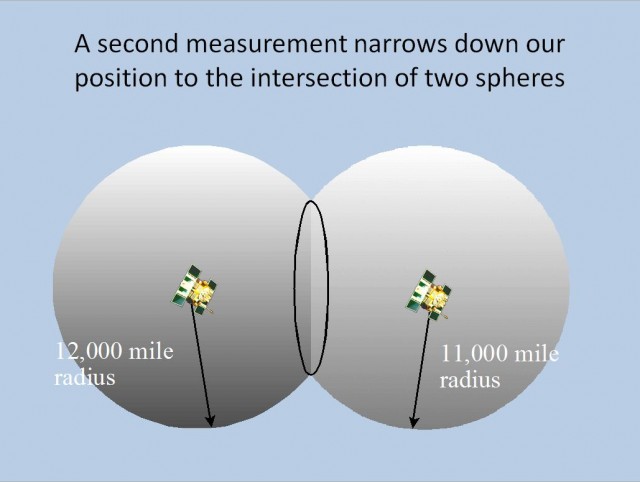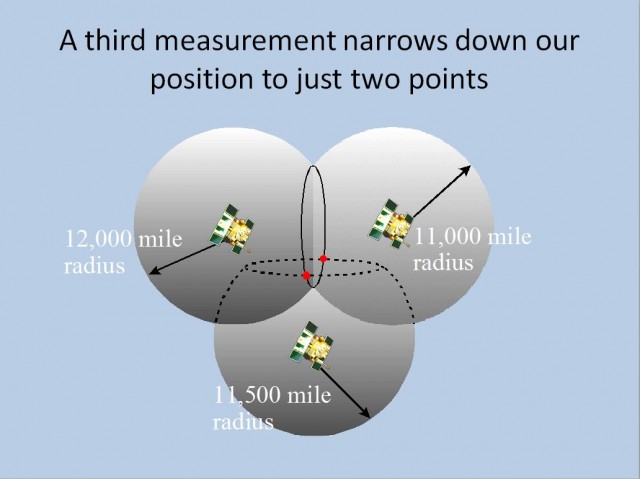Week 2: Module1: 2/6/13
Where is the world is the JRH? And how do you know where it is? Thanks to GPS we can pinpoint things, including ourselves, even in the middle of the ocean. GPS has only been widely used by the public for about the last 15 years but it is hard to calculate the enormity of its impact.
GPS works through a process called trilateration. Trilateration is determining a location by measuring the distance from at least three points based on the geometry of circles, triangles or spheres. In the case of GPS it is based on spheres. Wow that’s complicated! Lets make it less so.
The following images and text come from http://www.montana.edu/gps/understd.html which is a great resource for understanding the way a GPS works.
1) The GPS receiver “locks on” to one satellite and calculates the range to be 12,000 miles. This fact helps narrow the receiver location down, but it only tells us that we are somewhere on a sphere which is centered on the satellite and has a 12,000 mile radius. Many of the locations on that sphere are not on earth, but out in space.
2) Now, consider that the receiver picks up a signal from a second satellite and calculates the range between the receiver and the satellite to be 11,000 miles. That means we are also somewhere on a sphere with an 11,000 mile radius with the second satellite at the center. We must, therefore, be somewhere where these two spheres intersect. When the two spheres intersect, a circle is formed, so we must be somewhere on that circle
3) If the receiver picks up another satellite, say at 11,5000 miles away, another sphere is formed, and there are only two points where the three spheres intersect
Usually the receiver can discard one of the last two points because it is nowhere near the earth. So, we’re left with one point which is the location of the GPS receiver.
So how does the GPS measure the distance to these satellites? The speed of light! Each of the 24 satellites that are in orbit are constantly transmitting a signal. The GPS measures the time it takes for the signal to travel from the satellites and voila! We now are found!



